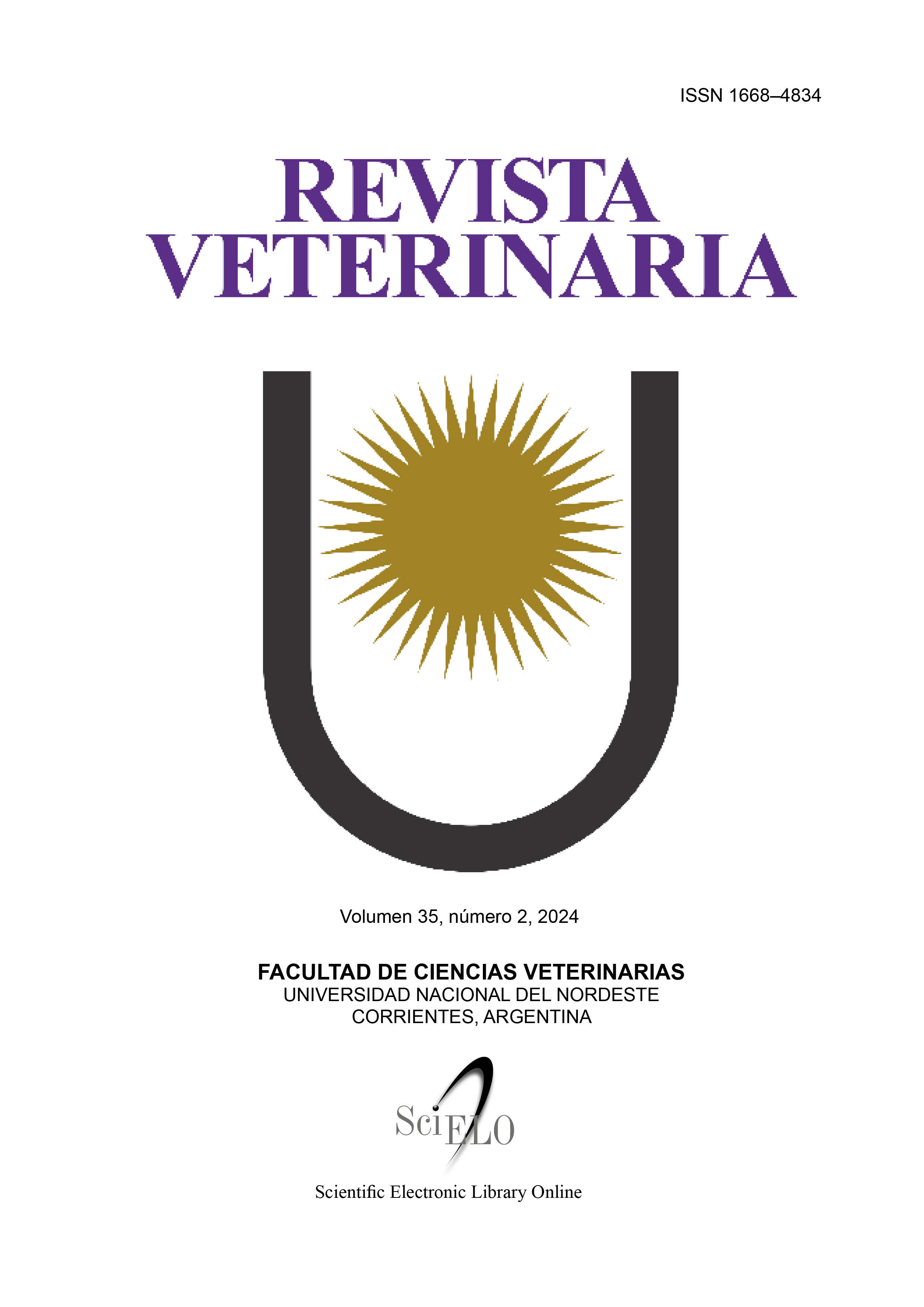Estimación de incidencias en ratas Sprague Dawley en investigaciones que involucren cultivos neuronales primarios
DOI:
https://doi.org/10.30972/vet.3527858Palabras clave:
Animales de laboratorio, Embriones de rata, Cálculo de muestra, Análisis estadísticoResumen
El uso de animales de laboratorio para investigación biomédica esta estrictamente regulado para prevenir su sufrimiento y uso inadecuado. Mientras que la experimentación está en proceso, las incidencias usualmente pueden incrementar el número de animales necesarios para alcanzar los objetivos. Desafortunadamente, las incidencias no son reportadas comúnmente en la literatura. En el presente estudio, trabajamos con cultivos neuronales primarios para establecer el primer modelo de isquemia cerebral in vitro en Panamá, reportando los efectos de las incidencias en el número final de animales. Los cultivos neuronales primarios fueron producidos de embriones de ratas Sprague Dawley. La citología vaginal fue utilizada para evaluar el ciclo estral. Las ratas gestantes además de sus evaluaciones de rutina recibieron seguimiento clínico y de peso. El cálculo de la muestra estimó la necesidad de 26 ratas para el estudio, utilizando una tasa de incidencias del 25%. El número final de animales utilizado empíricamente fue 26; sin embargo, la incidencia observada fue de 50% (13). Estos resultados subrayan la importancia del cálculo de incidencias para estudios que requieren animales de laboratorio, debiendo tomar en consideración el contexto y la información disponible de instituciones locales para permitir el uso más eficiente de los animales, en especial para laboratorios recientemente establecidos de países en vías de desarrollo.
Descargas
Citas
Agmo A. Male rat sexual behavior. Brain Res Brain Res Protoc. 1997; 1: 203-209.
Ajayi AF, Akhigbe RE. Staging of the estrous cycle and induction of estrus in experimental rodents: an update. Fertil Res Pract. 2020; 6: 5.
Anthony A, Ackerman E, Lloyd JA. Noise Stress in Laboratory Rodents. I. Behavioral and Endocrine Response of Mice, Rats, and Guinea Pigs. J Acoust Soc Am. 2005; 31: 1430-1437.
Arifin WN, Zahiruddin WM. Sample Size Calculation in Animal Studies Using Resource Equation Approach. Malays J Med Sci. 2017; 24: 101-105.
Charan J, Kantharia ND. How to calculate sample size in animal studies? J Pharmacol Pharmacother. 2013; 4: 303-306.
Dell RB, Holleran S, Ramakrishnan R. Sample size determination. ILAR J. 2002; 43: 207-213.
Fitts DA. Ethics and animal numbers: informal analyses, uncertain sample sizes, inefficient replications, and type I errors. J Am Assoc Lab Anim Sci. 2011; 50: 445-453.
Gaskill BN, Garner JP. Stressed out: providing laboratory animals with behavioral control to reduce the physiological effects of stress. Lab Anim (NY). 2017; 46: 142-145.
Hamid HY, Zakaria ZAB. Reproductive characteristics of the female laboratory rat. Afr J Biotechnol. 2013; 12: 2510-2514.
Holman C, Piper SK, Grittner U, Diamantaras AA, Kimmelman J, Siegerink B, Dirnagl U. Where Have All the Rodents Gone? The Effects of Attrition in Experimental Research on Cancer and Stroke. PLoS Biol. 2016; 14: e1002331.
Ilyas M, Adzim M, Simbak N, Atif A. Sample Size Calculation for Animal Studies Using Degree of Freedom (E); an Easy and Statistically Defined Approach for Metabolomics and Genetic Research. Curr Trends Biomed Eng Biosci. 2017; 10: 47-48.
Lincoln CK, Gabridge MG. Cell culture contamination: sources, consequences, prevention, and elimination. Methods Cell Biol. 1998; 57: 49-65.
Long JA, Evans HM. The oestrous cycle in the rat and its associated phenomena. Berkeley, Calif: University of California Press; 1922.
National Research Council (US) Committee for the Update of the Guide for the Care and Use of Laboratory Animals 2011. Guide for the Care and Use of Laboratory Animals. 8th ed. Washington (DC).
Percie du Sert N, Hurst V, Ahluwalia A, Alam S, Avey MT, Baker M, Browne WJ, Clark A, Cuthill IC, Dirnagl U, Emerson M, Garner P, Holgate ST, Howells DW, Karp NA, Lazic SE, Lidster K, MacCallum CJ, Macleod M, Pearl EJ, Petersen OH, Rawle F, Reynolds P, Rooney K, Sena ES, Silberberg SD, Steckler T, Wurbel H. The ARRIVE guidelines 2.0: Updated guidelines for reporting animal research. PLoS Biol. 2020; 18: e3000410.
Richter V, Muche R, Mayer B. How much confidence do we need in animal experiments? Statistical assumptions in sample size estimation. J Appl Anim Welf Sci. 2018; 21: 325-333.
Russell WMS, Burch RL. The principles of humane experimental technique. London: Methuen; 1959.
Russell WMS, Burch RL, Universities Federation for Animal W. The principles of humane experimental technique. Special. Wheathampstead: Universities Federation for Animal Welfare Wheathampstead; 1992. XIV, 238 p.: gràf.; 21 cm.
Sena ES, van der Worp HB, Bath PM, Howells DW, Macleod MR. Publication bias in reports of animal stroke studies leads to major overstatement of efficacy. PLoS Biol. 2010; 8: e1000344.
Sharp PE, La Regina MC, Suckow MA. The laboratory rat. Boca Raton: CRC Press Boca Raton; 1998. 214 pages: illustrations; 24 cm.
Swingle WW, Seay P, Perlmutt J, Collins EJ, Barlow GJr., Fedor EJ. An experimental study of pseudopregnancy in rat. Am J Physiol. 1951; 167: 586-592.
Tannenbaum J, Bennett BT. Russell and Burch’s 3Rs then and now: the need for clarity in definition and purpose. J Am Assoc Lab Anim Sci. 2015; 54: 120-132.
Descargas
Publicado
Cómo citar
Número
Sección
Licencia

Esta obra está bajo una licencia internacional Creative Commons Atribución-NoComercial 4.0.
Política de acceso abierto
Esta revista proporciona un acceso abierto inmediato a su contenido, basado en el principio de que ofrecer al público un acceso libre a las investigaciones ayuda a un mayor intercambio global de conocimiento. La publicación por parte de terceros será autorizada por Revista Veterinaria toda vez que se la reconozca debidamente y en forma explícita como lugar de publicación del original.
Esta obra está bajo una licencia de Creative Commons Reconocimiento-NoComercial 4.0 Internacional (CC BY-NC 4.0)










.jpg)
.jpg)



